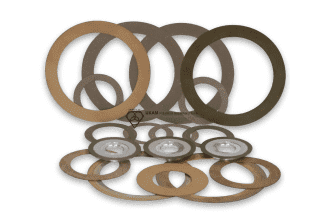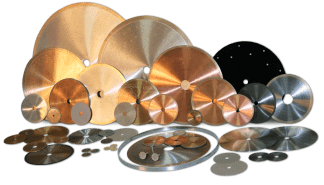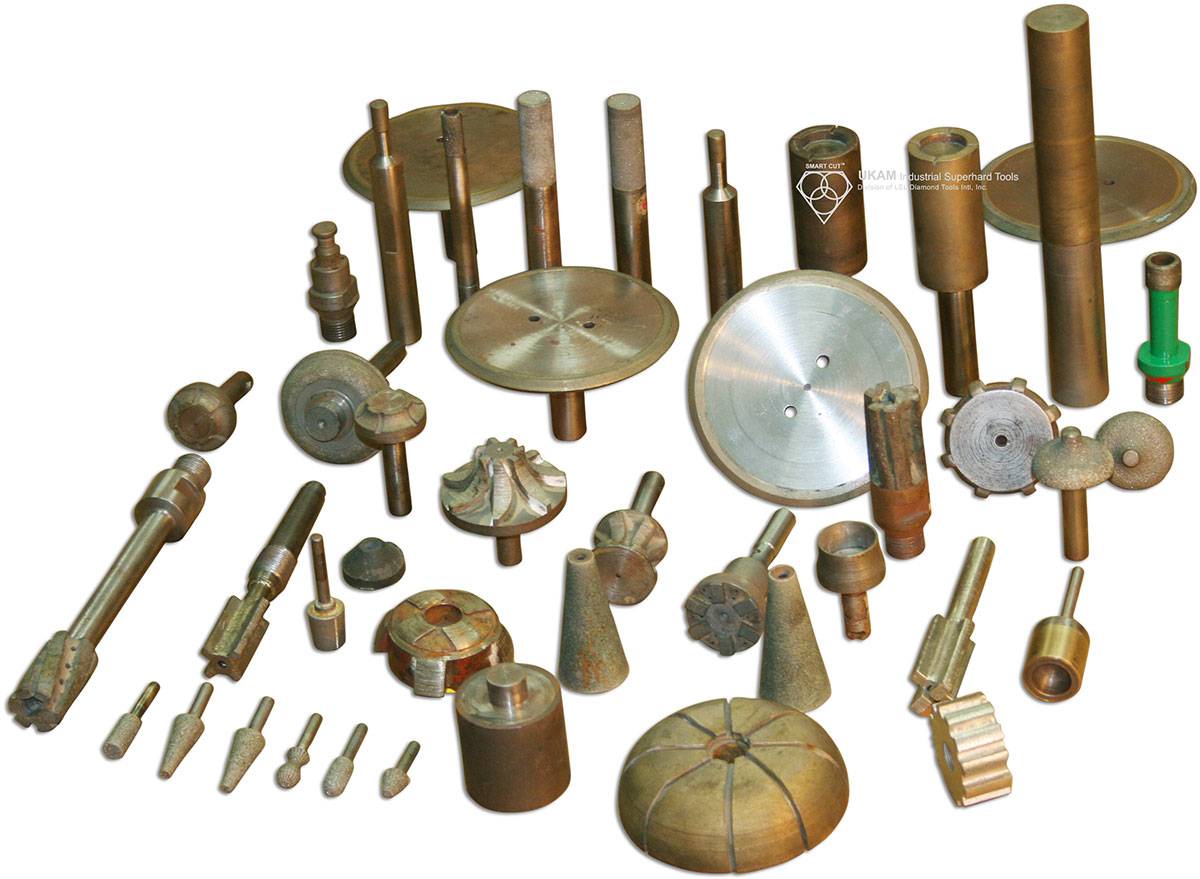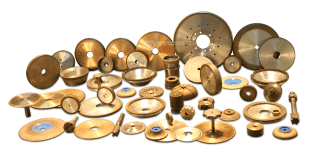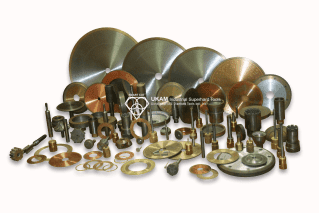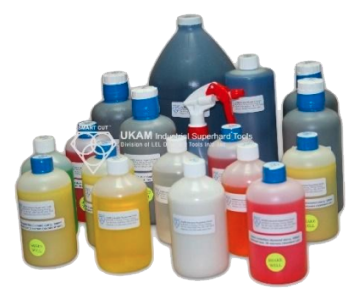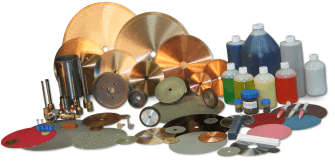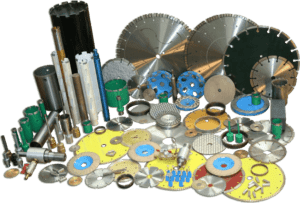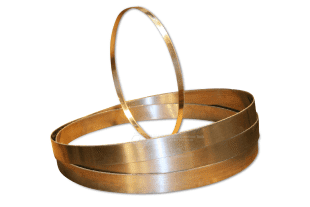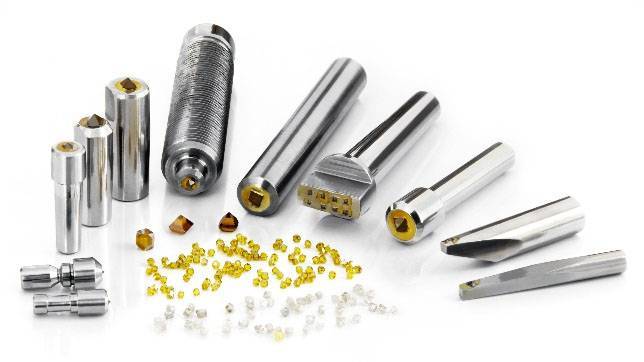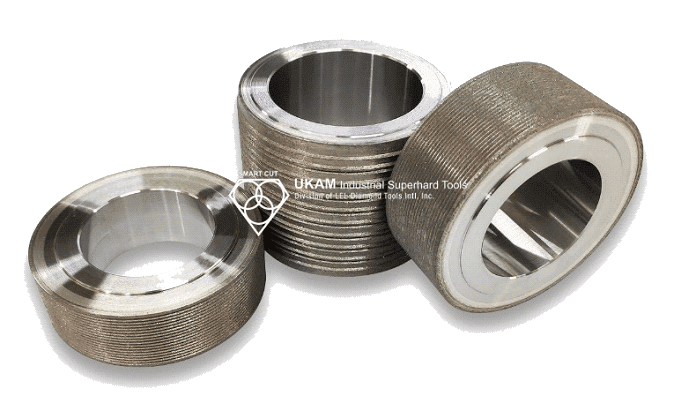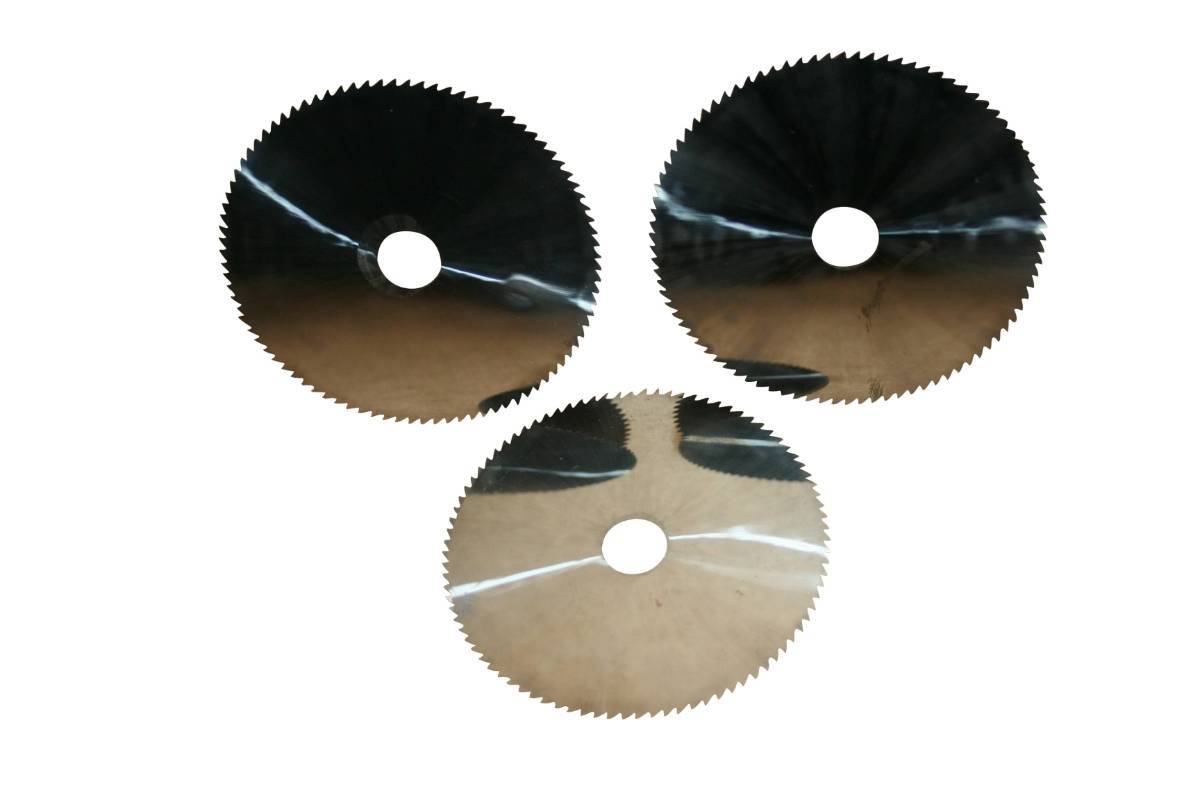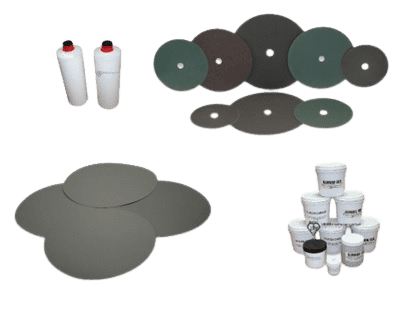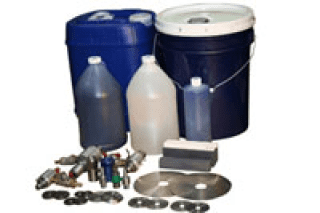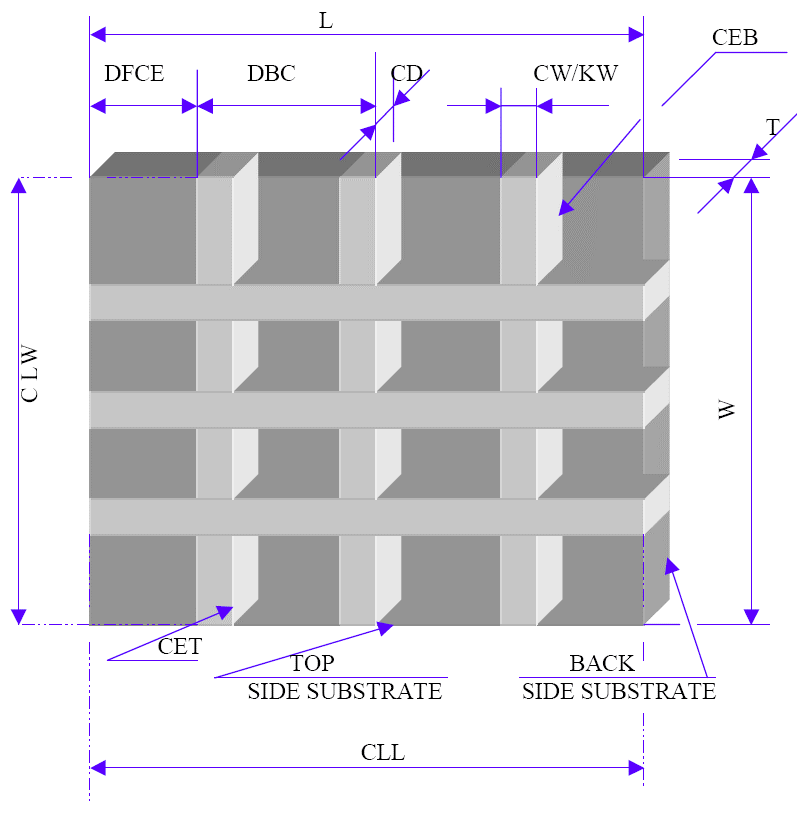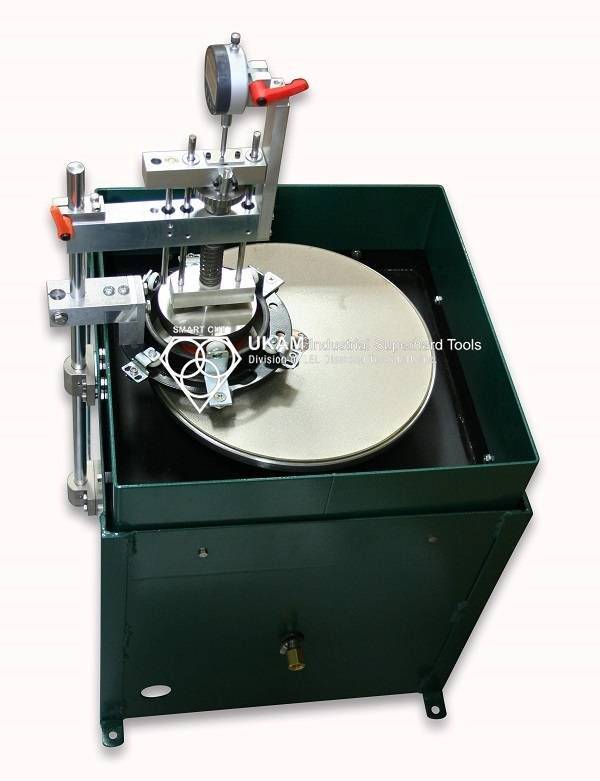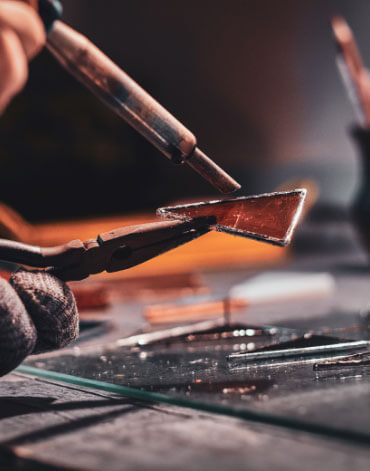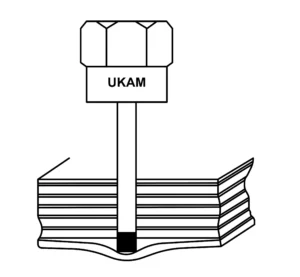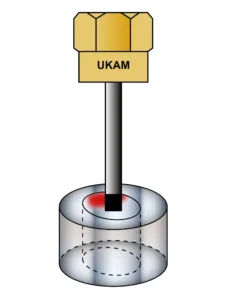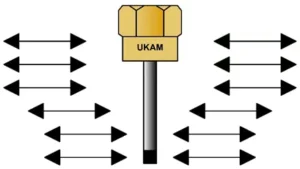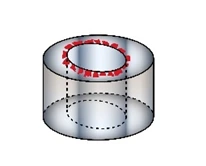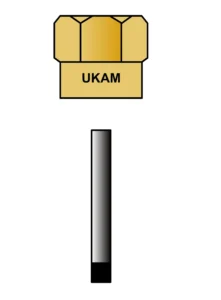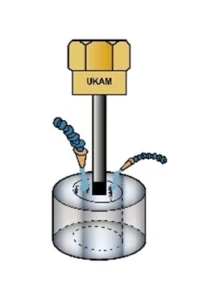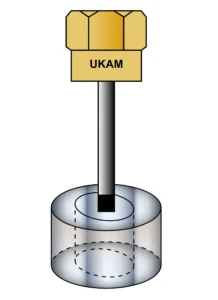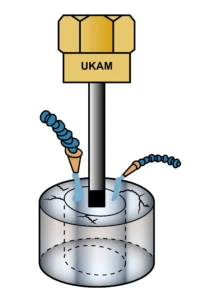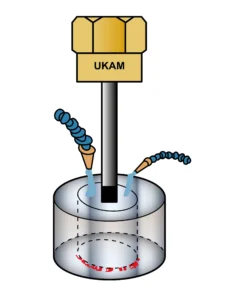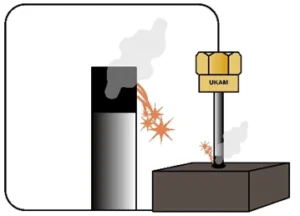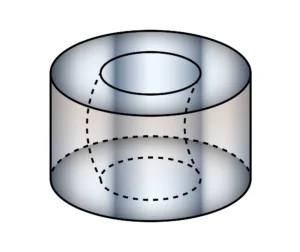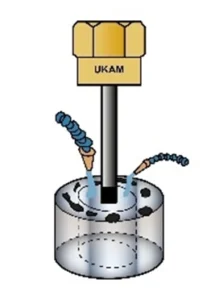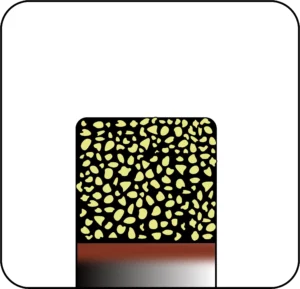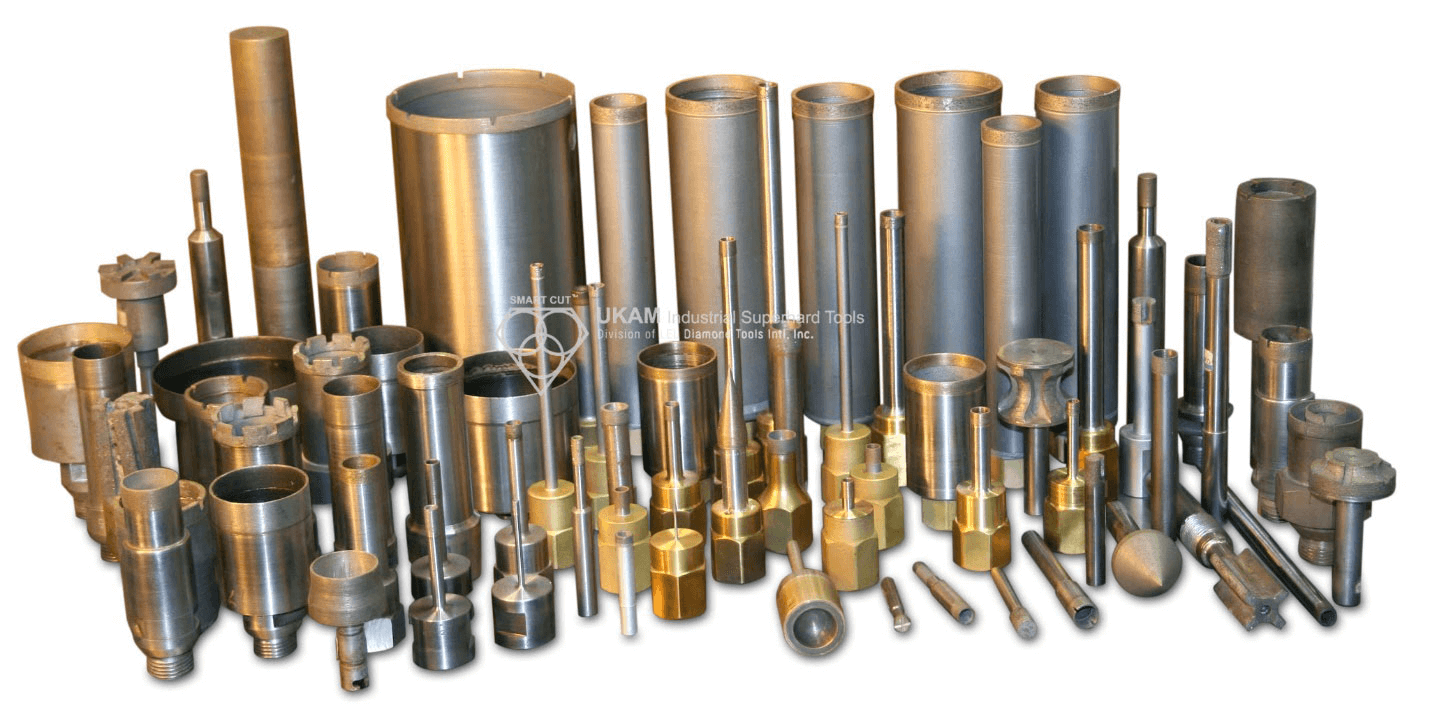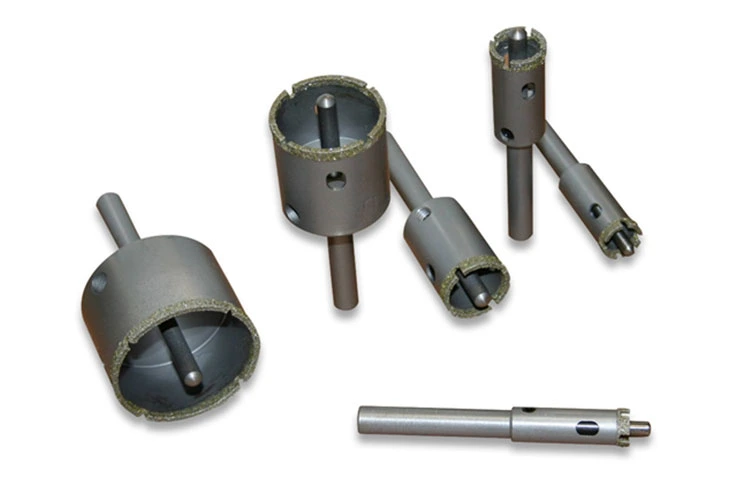Drilling Composite Materials Using Diamond Drills & Hole Saws
-
Posted by
contactor6

Drilling composite materials presents a unique set of challenges due to their heterogeneous nature, which combines different materials with varying properties. To achieve precision and maintain the integrity of both the tool and the workpiece, it is crucial to understand and implement the right drilling techniques. This article offers a comprehensive guide on effective drilling practices for composites, addressing everything from selecting the correct diamond drills and tools and setting the appropriate drilling parameters to executing the drilling process and managing post-drilling care.
Each section of the guide is dedicated to a specific aspect of the drilling process, providing detailed insights and practical tips to ensure optimal performance and prevent damage. Whether you're dealing with the complexities of fiber-reinforced polymers or the delicate nature of layered composites, the guidelines outlined here will help you navigate the challenges effectively. By following these best practices, you can improve your drilling operation, extend the life of your tools, and ensure the structural integrity of the materials you work with.
Share this Article with Friend or Colleague
1. Diamond Drill & Diamond Hole Saw / Core Drill Selection
Drilling of composite materials presents a distinct set of challenges. Composites, known for their heterogeneous combination of materials, demand specific tools that accommodate their unique physical and chemical properties. The use of inappropriate drilling equipment can lead to material damage, decreased tool life, and pool results.
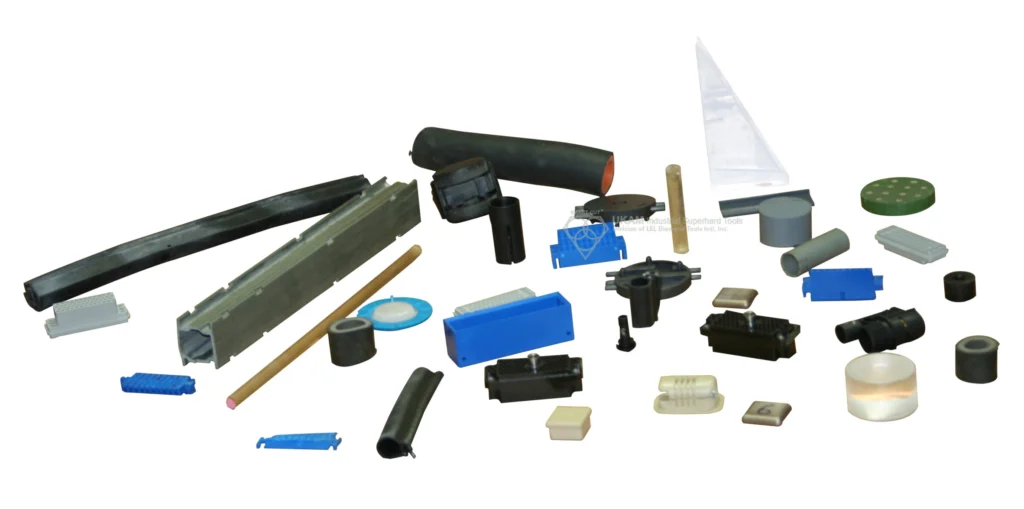
Composite materials are engineered from two or more constituent materials with significantly different physical or chemical properties. When combined, they produce a material with characteristics different from the individual components. Examples include fiberglass, carbon fiber-reinforced polymers, and metal matrix composites, which are prevalent in industries such as aerospace, automotive, and construction.

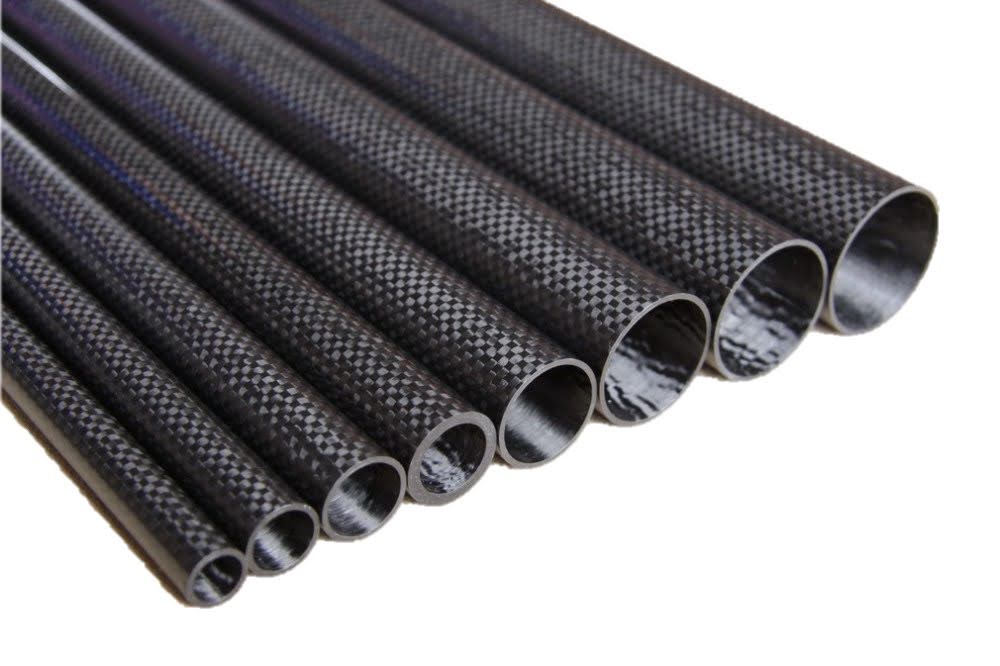
Challenges in Drilling Composites
Delamination:
Delamination - where the layers of a composite material separate during drilling. This issue occurs when the bond between the layers, often reinforced by a resin or adhesive, is disrupted due to improper drilling techniques. Common causes include applying excessive pressure, using inappropriate tools, and running drills at high RPMs or feed rates. These factors create uneven forces and heat buildup, which soften the resin and cause the layers to pull apart. Another significant contributor to delamination is the lack of proper coolant during drilling, which leads to overheating and weakens the composite structure.
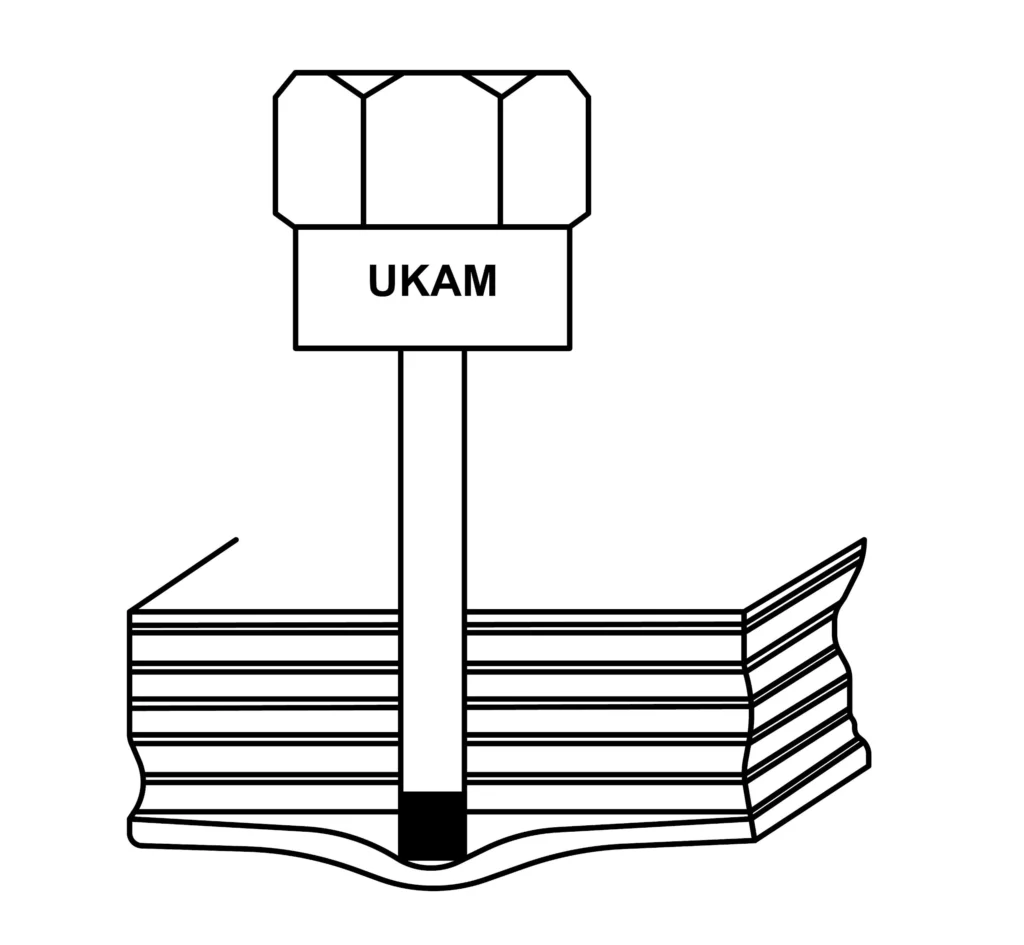
Splintering and Fraying:
Splintering and fraying are common issues encountered when drilling composite materials, especially those reinforced with fibers such as carbon fiber-reinforced polymers (CFRP) or glass fiber-reinforced polymers (GFRP). These materials consist of strong, stiff fibers embedded in a matrix, usually a resin. When improper drilling techniques are used, or if the tool is not suited for composites, the fibers can protrude, break, or pull out from the matrix, compromising the integrity and precision of the drilled hole.
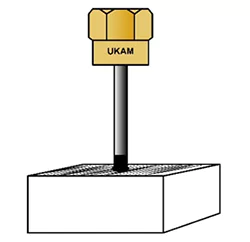

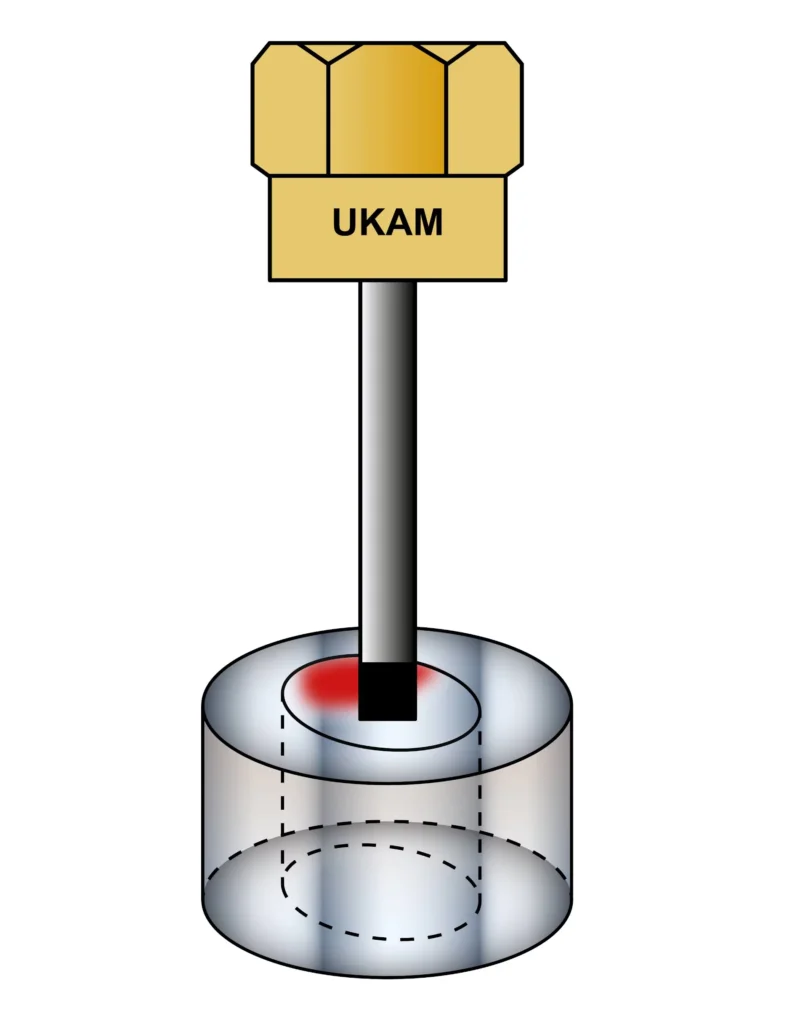
Heat Generation:
Excessive heat generation during the drilling or machining of composite materials is a major challenge that can significantly affect both the material and the quality of the finished product. Unlike metals, composites are made up of layers of different materials (such as fibers and a resin matrix) that are bonded together. When drilling, the friction between the cutting tool and the composite material generates heat. If the heat becomes excessive, it can melt or distort the resin matrix, causing a variety of issues that alter the composite's mechanical and chemical properties.
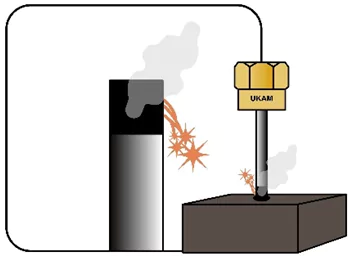
https://ukam.com/These challenges necessitate a thorough understanding of composites to select the appropriate drilling tools that will minimize damage and maximize performance. There are many different types of diamond and non diamond drills that can be used for these applications. Here we will cover the different types of drills used for this purpose.
When selecting a diamond hole saw or core drill for drilling composites and similar materials, it is crucial to take several factors into account to ensure efficiency and preserve the integrity of both the tool and the material.
The choice of hole saw size is primarily determined by the desired hole diameter. The pilot type, either diamond coated or uncoated, should be chosen based on the hardness of the material being drilled.
The angle of the diamond hole saw is another critical consideration. Different fiber orientations and matrix components in composite materials may necessitate specific angles for optimal drilling. This is because incorrect angles can cause excessive wear on the tool and potentially damage the material by not aligning properly with the fiber orientation, leading to delamination or pull-out.
It is advisable to avoid using the same drill bit on various types of materials. This practice can lead to cross-contamination, where residues from one material can affect the surface or integrity of another during subsequent uses. Additionally, using the same drill on different materials can lead to uneven wear or damage to the drill bit, impacting its performance and lifespan.
For projects that involve drilling multiple holes, it's important to carefully plan the sequence of drilling operations. This planning helps in minimizing stress and deformation of the material, which can occur due to heat generation and mechanical pressure during the drilling process. Strategic planning includes mapping out the order of holes to distribute the stress evenly across the workpiece and scheduling breaks to allow the material to cool down.
To reduce the load on the diamond hole saw, consider employing a technique where drilling begins with a smaller diameter bit and progressively moves to larger sizes until the desired hole diameter is achieved. This stepwise approach helps in reducing the initial burden on the tool, minimizing heat build-up, and enhancing the overall cutting efficiency. This method is particularly beneficial when working with tough, abrasive materials where direct drilling with a large diameter bit may lead to excessive tool wear or material damage.
2. Preparing to Drill & Drilling Surface
Preparing the surface for drilling and executing the drill process require careful attention, especially when dealing with composites and other similar materials. If you encounter a slippery or hard surface, using a center punch to create a starting point can prevent the drill from wandering. Ensuring that the material is securely clamped and stable is fundamental, as any movement could affect the precision and safety of the drilling operation.
It is advisable to mark the drilling point clearly on the material to maintain accuracy. Conducting a pre-drilling analysis of the composite can reveal essential details about its structure and properties, such as fiber orientation, which significantly influences the drilling strategy. This understanding helps in choosing the right drill bits and drilling parameters to avoid damage to the material and ensure efficient drilling.
Safety is paramount, so always wear appropriate safety equipment, including eye protection, gloves, and hearing protection. Ensure the work area is well-lit and free from any hazards to facilitate a safe and effective drilling process.
For smooth or hard materials where the drill might slip, starting with a smaller pilot drill can create a guide hole, making it easier to proceed with the larger drill bit. The drill and the material must remain stable throughout the process, which can be achieved by using clamps or vices to secure the material firmly. If the hole depth is critical, using a depth stop or marking the drill bit with tape can serve as a visual guide to ensure precision.
If you plan to drill angled holes, it is crucial to double-check the alignment before starting, as any errors in angle can be more pronounced and challenging to correct later. Familiarizing yourself with the properties of the material being drilled will further inform your choice of drilling parameters, contributing to a more successful outcome.
For vertical drilling, it is essential to ensure that the drill is perfectly perpendicular to the surface. Using a drill stand or press can greatly enhance accuracy, especially when precise alignment is necessary. When working with larger diameter drills or thicker materials, increasing support for the material and possibly using a more powerful drill can help manage the extra load.
When drilling thin materials, using a backing board can prevent deformation of the material and promote a clean exit. To achieve cleaner cuts and reduce the risk of splintering, consider applying tape over the drilling area. Mark the drilling area with a non-permanent marker or masking tape to enhance visibility and precision, which is particularly useful on dark or textured surfaces.
Lastly, be attentive to tool deflection, especially in thin composite materials. Adequate support for the material and using correct drill speeds can mitigate this issue, ensuring the integrity of the hole and the material remains intact.
3. Install the Diamond Hole Saw
Installing a diamond hole saw correctly is crucial for achieving optimal results when drilling through composites and similar materials. Begin by fitting the tool into the drill chuck and tighten it securely to ensure there is no slippage during operation. It is essential to verify that the shank size of the hole saw matches the chuck size of your drill to avoid any misalignment or potential damage to both the tool and the drill.
Clamping down the composite material firmly is another critical step. This precaution prevents any movement or flexing during the drilling process, which can cause inaccuracies or even damage to the material. Stability is key to achieving precise cuts and maintaining the integrity of both the material and the tool.
When positioning the drill, ensure it is perpendicular to the material surface to drill a straight hole. If the requirement is for angled holes, adjust the drill to the specific angle needed for your project. Using a drill guide can greatly improve precision, especially for projects requiring angled or exceptionally precise holes. The guide assists in maintaining the correct angle and position throughout the drilling process, reducing the risk of errors.

For hard-to-reach areas, drill extensions can be used to extend the reach of your tool. However, be cautious with extensions as they can introduce challenges in maintaining stability and alignment. The added length can make it more difficult to control the drill, increasing the potential for misalignment or unintended movement. When using extensions, it’s advisable to proceed slowly and check alignment frequently to ensure the drilling remains on course.
4. Recommended Drilling Speeds for Composite Materials(RPM Recommendations)
When handling drilling operations with diamond hole saws for composite materials, it is essential to carefully select and manage the drilling speeds to optimize performance and protect the integrity of both the tool and the material. The process begins by setting a moderate RPM, which should be adjusted based on the density and specific characteristics of the composite material. Generally, composite materials benefit from lower RPMs as high speeds can generate excessive heat, leading to issues like overheating and delamination.
The drilling should commence at a low speed, which helps in precisely initiating the hole without causing any damage to the material surface. As the drilling progresses, you can gradually increase the speed while maintaining a steady pressure. This incremental adjustment allows you to respond to the specific needs of different types of composites, such as carbon fiber or fiberglass, each of which may require different handling due to their unique properties.
It is crucial to be adaptive and responsive to the feedback received from the drilling process. Changes in sound or resistance can indicate different challenges or requirements, necessitating adjustments in speed. When working on uneven or rough surfaces, it is advisable to maintain a slower feed rate and RPM to ensure control and accuracy, preventing the drill bit from wandering.
If the composite material consists of layers with varying hardness, adjust the feed rate and RPM as you penetrate each layer. This careful management helps to handle sudden changes in resistance effectively and reduces the risk of damaging the material.
Maintaining a consistent drilling speed is key to achieving clean, burr-free holes. Special care should be taken in areas where precision is critical, such as near edges or corners, where reduced speed and feed rate are necessary to prevent chipping or cracking.
In the case of resin-rich composites, lower speeds are preferable to prevent the heat from melting or distorting the resin. For fragile or thin materials, employing a sandwich technique with a backing material can provide necessary support during the drilling, ensuring the structural integrity of the composite.
It's important to balance the drilling speed with the quality of the hole. Faster drilling might lead to reduced quality and potential damage, so optimal speed must be carefully determined to maintain efficiency while ensuring the composite's integrity.
Secure work holding is another vital aspect, ensuring that the composite material is held firmly without inducing stress or deformation. This stability is crucial for achieving clean entry and exit points.
Securing your material while drilling

MECHANICAL CLAMPING/FIXTURING

TAPE MOUNTING WITH VACCUM CHUCK

DOUBLE SIDED ADHESIVE TAPE

WAX/GLUE MOUNTING TO MEDIA

WAX/GLUE MOUNTING TO MEDIA
Experimentation with tool speed can be beneficial to find the ideal RPM for different types of composites, which may respond differently to the drilling process. Additionally, understanding the orientation of the different layers within the composite material can significantly impact drilling dynamics and should be considered when setting drilling parameters.
Here are some general RPM guidelines to consider:
-
 Start at 2100 RPM for diameters ranging from 1/2" to 1-1/4".
Start at 2100 RPM for diameters ranging from 1/2" to 1-1/4".
-
 Adjust between 1500 to 1700 RPM for diameters from 1-1/4" to 2".
Adjust between 1500 to 1700 RPM for diameters from 1-1/4" to 2".
-
 Use approximately 1100 RPM for diameters from 2" to 3".
Use approximately 1100 RPM for diameters from 2" to 3".
-
 Reduce to 600 RPM for a 4-1/2" diameter.
Reduce to 600 RPM for a 4-1/2" diameter.
-
 For diameters larger than 4-1/2", maintain a speed range of 250 to 400 RPM.
For diameters larger than 4-1/2", maintain a speed range of 250 to 400 RPM.
These speeds should be fine-tuned based on the material's hardness, with harder materials requiring lower speeds to prevent wear on the diamond coating and ensure precision in drilling outcomes.
|
Composite Material |
Recommended RPMs |
Detailed Considerations |
|---|---|---|
|
Carbon Fiber-Reinforced Polymers (CFRP) |
3,000 to 12,000 RPM |
Highly abrasive; lower RPMs prevent delamination and reduce heat. Higher RPMs can be used with advanced cooling systems and diamond-coated tools for precision trimming. |
|
Glass Fiber-Reinforced Polymers (GFRP) |
5,000 to 15,000 RPM |
Abrasive fibers; lower RPMs for drilling to reduce fiber fraying and heat generation. Higher speeds for routing and shaping with proper cooling and sharp diamond-coated tools. |
|
Kevlar-Reinforced Composites |
2,000 to 8,000 RPM |
Kevlar is tough to machine; low RPMs minimize fraying and fuzzing. Use higher RPMs for trimming with sharp tools and slow feed rates to prevent material distortion. |
|
Thermoplastic Composites |
8,000 to 18,000 RPM |
Higher RPMs are generally effective, but care must be taken to avoid melting. Lower speeds for thicker materials or deep drilling to manage heat buildup. |
|
Metal Matrix Composites (MMC) |
1,000 to 6,000 RPM |
Abrasive and hard; use diamond tools with lower RPMs to prevent premature tool wear and excessive heat. Suitable for slow, precise cutting. |
|
Hybrid Composites (Carbon and Metal Fibers) |
2,500 to 8,000 RPM |
Low to moderate RPMs to handle the mix of materials; lower speeds prevent delamination and excessive wear. Higher RPMs for trimming with controlled cooling and tool selection. |
|
Laminates (Fiberglass, Carbon Fiber) |
3,000 to 10,000 RPM |
Moderate RPMs for drilling to avoid layer separation. Higher speeds for trimming and shaping with attention to entry and exit points to avoid delamination. |
|
Wood-Plastic Composites (WPC) |
10,000 to 18,000 RPM |
Can handle higher RPMs due to softness. Suitable for fast trimming and shaping. Coolants recommended for extended operations to prevent softening. |
|
Honeycomb Composites |
2,000 to 5,000 RPM |
Fragile structure; lower RPMs to avoid crushing or deforming honeycomb layers. Light pressure and lower speeds are ideal. |
|
Phenolic-Based Composites |
3,000 to 9,000 RPM |
Brittle; moderate RPMs help prevent chipping or cracking. Lower speeds for drilling and higher for light trimming or shaping. |
|
Epoxy Resin Composites |
3,000 to 10,000 RPM |
Versatile but prone to delamination; moderate speeds for drilling and higher RPMs for trimming with cooling to prevent overheating and cracking. |
|
Carbon Nanotube (CNT) Composites |
2,000 to 6,000 RPM |
Extremely strong; use low RPMs for precision and to avoid damaging the nano-scale structure. Diamond tools preferred for minimizing wear. |
|
Basalt Fiber Composites |
3,500 to 10,000 RPM |
Similar to GFRP, but stronger; moderate RPMs for drilling and higher RPMs for trimming. Requires heat management to avoid fiber degradation. |
|
Aramid Fiber Composites (Kevlar®) |
2,000 to 6,000 RPM |
Tough and prone to fuzzing; use low speeds for drilling and sharp tools. Higher RPMs may work for trimming, but care is needed to avoid heat-related deformation. |
|
Boron Fiber Composites |
1,500 to 5,000 RPM |
Extremely hard and abrasive; use low speeds with diamond-coated tools to minimize tool wear. Higher speeds only for very light cutting tasks. |
|
Bismaleimide (BMI) Composites |
2,500 to 7,500 RPM |
Brittle, high-temperature resistance; moderate RPMs to prevent chipping and cracking. Used often in aerospace where precision is important. |
|
Polyetheretherketone (PEEK) Composites |
4,000 to 12,000 RPM |
Tough but can melt if overheated; higher RPMs suitable for trimming and shaping. Lower speeds for thicker sections or deep drilling to avoid heat buildup. |
|
Ultra-High-Molecular-Weight Polyethylene (UHMWPE) |
8,000 to 16,000 RPM |
Tough and abrasion-resistant; high RPMs work for trimming but require cooling to prevent material softening or deformation. |
|
Flax Fiber Composites |
4,000 to 10,000 RPM |
Sustainable, natural fibers; moderate RPMs to avoid fraying and preserve material integrity. Diamond tools recommended for clean cuts. |
|
Dyneema® Composites (UHMWPE) |
6,000 to 12,000 RPM |
Ultra-high strength; challenging to machine. Moderate RPMs are best to avoid excessive heat and maintain cutting precision. Coolants help prevent softening. |
|
Polypropylene (PP) Composites |
8,000 to 18,000 RPM |
Softer than other composites; high RPMs work for fast trimming and shaping. However, use cooling to prevent heat buildup and material softening. |
|
Polyurethane (PU) Composites |
6,000 to 15,000 RPM |
Can handle moderate to high RPMs for shaping and trimming, but heat control is necessary to avoid softening. Lower RPMs for precision drilling to maintain structural integrity. |
|
Hybrid Carbon-Kevlar Composites |
2,500 to 7,000 RPM |
Combination of strength and toughness; low to moderate RPMs prevent fiber fraying and delamination. Higher speeds are possible for trimming with proper tool selection and cooling systems. |
5. Starting to Drill
When beginning the drilling process with a diamond hole saw, it is essential to start with precision and care. The initial contact between the tool's diamond coating and the material should be gentle, allowing the tool to begin cutting without the need for excessive force. This approach helps in making an initial indentation smoothly and effectively, setting the stage for a clean and precise hole.

Maintaining a stable grip and position during this initial phase is crucial to prevent the tool from wandering. This stability is especially important when working with materials that are slippery or irregular in texture. Starting the drill at a low speed is recommended as it allows you to establish the hole accurately without stressing the material.
Once the hole is initiated, you can gradually increase the speed to the recommended RPM. This should be done while applying moderate, steady pressure. It is important to avoid forcing the tool into the material, as this can lead to tool wear and potential damage to both the tool and the material.
In some instances, especially when precision is critical, drilling a pilot hole before using the core drill is beneficial. A pilot hole serves as a guide, helping to maintain accuracy and reduce stress on the material during the main drilling operation. Starting with smaller pilot holes and progressively moving to larger diameters is a strategic approach that minimizes material stress and enhances the overall stability of the drilling process.
When drilling near the edges of a composite material, it is vital to reinforce or support the area to prevent any chipping or cracking. This support can be provided by additional clamping or using a backing material that supports the composite during drilling. This precaution is particularly important when working with brittle or layered composites where the edges are more prone to damage.
6. Use of Coolants
The use of coolants is a critical aspect of drilling, particularly when working with extended drilling sessions or hard materials, as it prevents overheating and preserves both the tool and the material. Whether using a coolant or water, it is essential to apply it consistently to both the tool and the material to facilitate effective heat management.
For materials that are particularly prone to heat damage, such as ceramics or glass, keeping the drilling area consistently cooled crucial. This continuous application of water prevents the material from cracking under the heat generated by the drilling process. In the case of metal drilling, employing a continuous stream of coolant is ideal as it helps in managing the heat effectively, ensuring that the drill bit remains cool and the metal does not warp or weaken from the temperature.
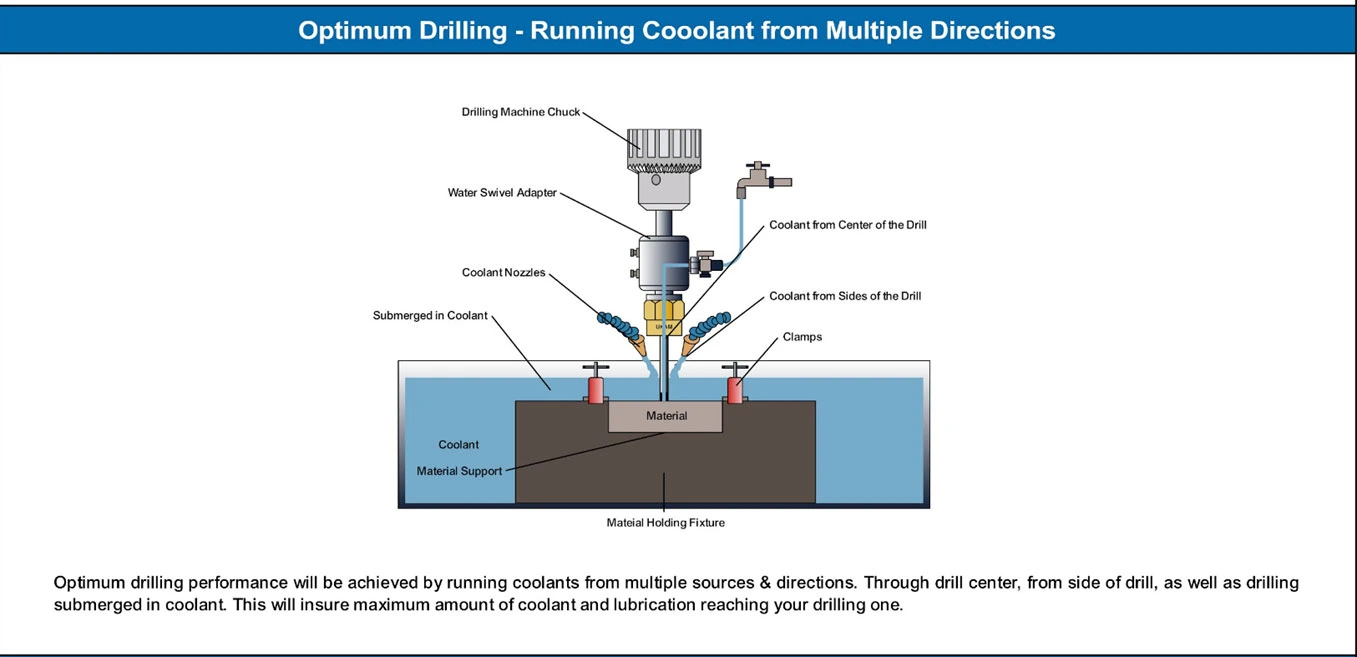
Thick or high-density composites also require the use of coolants to prevent overheating. Water or water-soluble oils are particularly effective for these types of materials. They help in maintaining a lower temperature at the drilling site, which is essential for avoiding thermal damage to the composite material.

When applying coolant, it is important to ensure that it is evenly and directly applied to both the diamond drill and the material surface. This direct application enhances heat dissipation, keeping the temperatures within safe limits and ensuring the integrity of the drilling operation.

In situations where dry drilling is necessary, especially with hard materials, it is advisable to take frequent breaks. These pauses allow both the tool and the material to cool down, preventing overheating that could otherwise lead to damage or a decrease in tool performance.
In environments where liquid coolants cannot be used, compressed air offers a viable alternative. Compressed air can be used to cool the drill bit effectively and help in removing debris from the drilling site. This method is particularly useful in maintaining clear visibility of the work area and ensuring that the drill bit operates at optimal temperatures.
7. Pecking Cycles
Pecking cycles are an essential technique in drilling, especially when dealing with deep drilling or dense materials. This method involves periodically withdrawing the tool during the drilling process, which serves multiple purposes: it clears debris from the drill bit and the hole, aids in heat dissipation, and ultimately prolongs the life of the tool.
In situations where drilling is prolonged, it is important to implement pecking cycles more frequently. This helps in managing the accumulation of debris and reducing heat, which can compromise the quality of the hole and the durability of the drill bit. Regular breaks are also recommended during long drilling tasks. These breaks not only allow the tool to cool down but also provide an opportunity to inspect the tool for wear or damage and to ensure it is still operating effectively.
Approaching the final depth of the hole slowly and cautiously is important for maintaining precision. This gradual approach allows for adjustments as you near the target depth, ensuring the hole meets the required specifications without any errors.
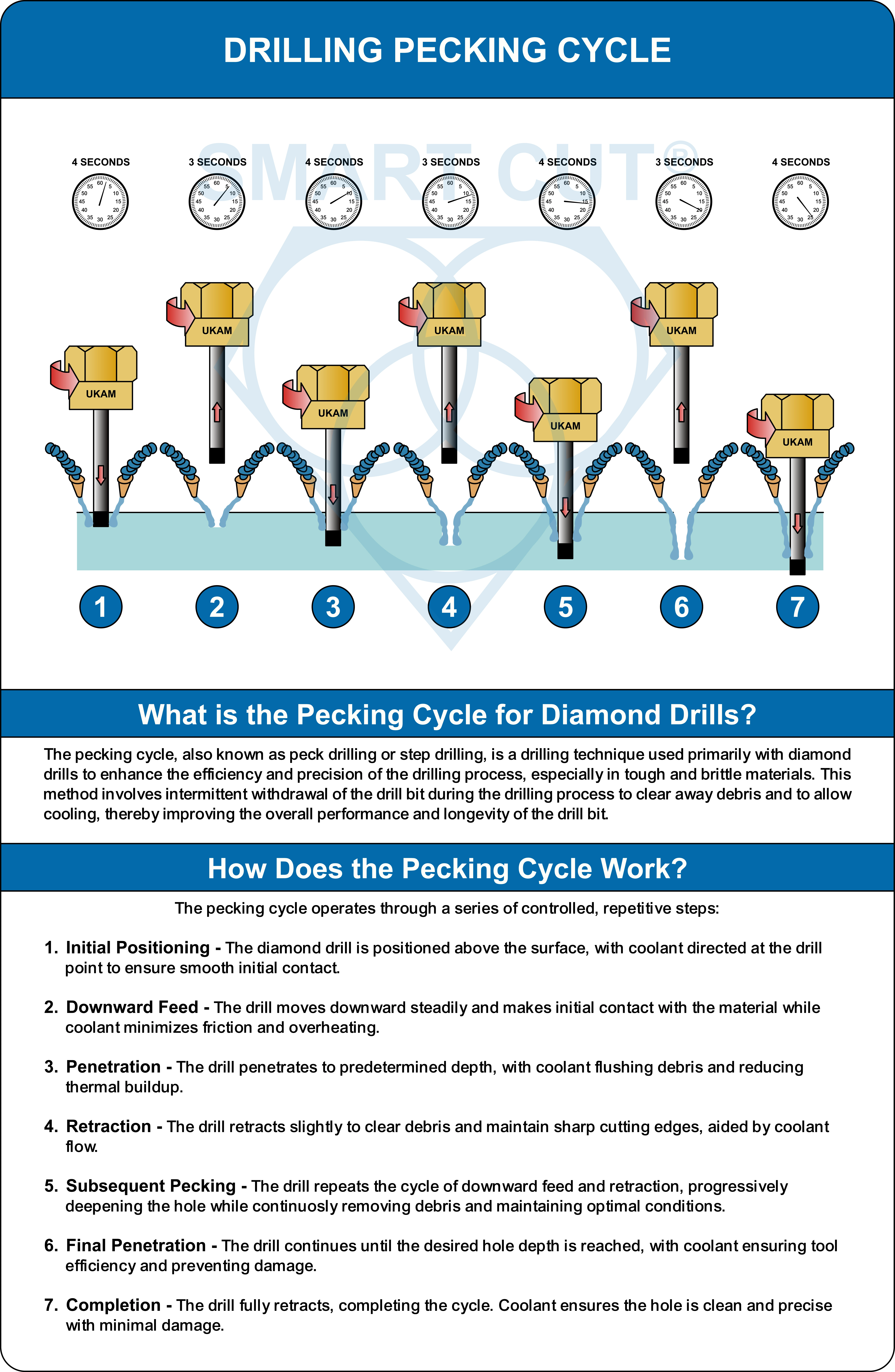
Peck drilling is particularly beneficial for deeper holes. By intermittently drilling and then withdrawing the tool, you allow the debris to clear and heat to dissipate. This method is especially useful when drilling through composites that have different layers of materials, as it allows you to adjust the speed and pressure according to the specific characteristics of each layer, optimizing the drilling process.
For thicker composite materials, increasing the frequency of peck drilling is recommended. This increased frequency helps in allowing chips and debris to escape more effectively, which is crucial in preventing heat buildup and ensuring the integrity of both the material and the drill bit.
Optimizing the depth of each peck cycle based on the material’s thickness and density is also crucial. Proper adjustment of the peck depth ensures efficient removal of chips and cooling of the drill bit, which contributes to a smoother and more efficient drilling operation.
8. Feed Rates
Maintaining the right feed rate during drilling is important for achieving optimal results and preserving the integrity of both the tool and the material. It is important to establish a consistent feed rate that aligns with the capabilities of the tool and the hardness of the material being drilled. Rapid feed rates should be avoided as they might overload the tool and cause chipping or other forms of damage.

As the drilling progresses and the hole deepens, you can gradually increase the feed rate, but it is critical to never exceed the tool’s capacity. Monitoring the sound of the drill and feeling for any vibrations can help gauge the appropriate feed rate, providing real-time feedback on the drilling process.
For very hard or abrasive materials, it is advisable to reduce both the feed rate and RPM to minimize wear on the diamond coating. This adjustment helps in extending the life of the tool and ensuring the quality of the cut. In precision-sensitive areas, such as near edges or corners, both speed and feed rate should be reduced to prevent chipping or cracking.
A consistent, moderate feed rate is recommended to avoid forcing the tool too quickly into the material, which could cause delamination or fiber pull-out, especially in composites. Lower feed rates often offer more effective control, particularly with composites prone to chipping or fraying.
For heat-sensitive composites, employing intermittent drilling with short bursts can prevent excessive heat buildup that might alter the material's properties. If the composite surface is rough or uneven, it’s important to adjust the drill pressure and speed to accommodate varying resistance, ensuring smooth drilling.
In some cases, using specialty coolants or lubricants designed for composites can significantly enhance the drilling process by reducing heat and improving bit life. These products help in maintaining the drill bit’s effectiveness and prolonging its usability.
It is crucial to apply only the necessary force to engage the diamond hole saw with the material. Excessive force can lead to issues like delamination, fiber damage, or cracking, especially in layered or fiber-reinforced composites. Customize feed rate and speed settings for each type of composite material based on its specific characteristics and how it responds to drilling.
For composites with high fiber content, lower RPM and higher feed rates are beneficial to prevent fiber pullout and ensure clean cuts. Managing the size of the chips through adjustments in drill speed and feed rate is also important; smaller chips are preferable as they are easier to evacuate and reduce the risk of clogging the drill bit.

Start the drilling with gradually increasing pressure to avoid imposing sudden stress on the composite material. However, be cautious of applying excessive pressure, which can induce cracks or damage, particularly in more brittle composite materials.
9. Monitoring and Adjustments
Monitoring and making adjustments during the drilling process is critical to ensure optimal performance and prevent damage to both the tool and the material. It is essential to continuously watch for signs of overheating, vibration, or unusual resistance, which may necessitate immediate adjustments in speed, feed rate, or coolant flow. Regular clearing of chips and debris is particularly important in deep hole drilling to prevent clogging and further overheating.
Optimizing the drilling speed and feed rate alongside using coolants can significantly minimize heat generation. If excessive vibration is noticed, it’s crucial to check the tool and drill alignment and ensure that everything is properly secured and balanced to avoid any accidents or equipment damage.
When drilling at an angle, employing a drill guide or jig can help maintain the consistency of the angle throughout the process. It’s important to avoid applying side pressure as this can cause the drill bit to break. Monitoring the condition of the pilot bit is also key; if it becomes worn out, replacing it promptly will help maintain drilling accuracy and effectiveness.
Staying focused during the drilling task, especially with tough materials or complex operations, is vital. Periodic checks on the drill’s alignment, especially after changing the setup or drilling multiple holes, can prevent errors. Pushing the drill too hard or too fast should be avoided to reduce wear on the diamond coating and prevent premature deterioration of the tool.
Keeping the tool clean and avoiding contact with materials that could clog or contaminate the diamond coating, such as adhesives or soft metals, is also important. Finding the right balance between drill speed and pressure for each material can maximize both efficiency and tool life.
When drilling overhead, wearing protective headgear is essential to prevent injuries from falling debris. Regular temperature checks on both the tool and the material are important, as excessive heat can damage the composite material. Signs of delamination or fraying should be watched for, as these indicate that the pressure or speed may be too high.
In scenarios of excessive vibration, reducing the drilling speed and checking the tool’s alignment and the stability of the material are necessary steps. When drilling through composites with multiple layers, being mindful of potential changes in resistance and adjusting techniques accordingly is essential.
Regular inspections of the diamond hole saw for signs of wear or damage are important, as worn tools can cause damage to the composite material. To minimize fiber pull-out, especially in fiber-reinforced composites, ensuring that the diamond crystals on the saw are sharp and exposed and maintaining an appropriate drilling speed is crucial.
Implementing cool-down periods in long drilling sessions helps prevent overheating of both the tool and the material. Monitoring the wear on the diamond hole saw during extensive use is important since composite materials can be abrasive and may accelerate tool wear.
Alternating between drilling and cooling periods, adjusting drill parameters based on the thickness of the composite material, and keeping the drill bit clean and free of contaminants are all practices that enhance the drilling process. When dealing with composites of varying densities or multiple layers, adjusting drilling parameters on the fly and employing a sequential drilling approach are effective strategies.
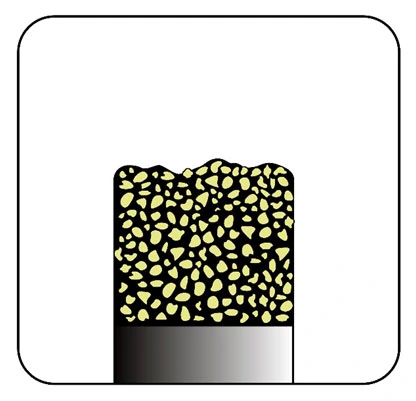
Be mindful of moisture content in certain composites, which can affect drilling dynamics and the longevity of the diamond hole saw. For transparent composites, extra care is needed to avoid scratching or marking, which could impair visibility. Considering environmental conditions like temperature and humidity can also impact both the composite material and the drilling process.
Special care should be taken when drilling composite sandwich panels to avoid damaging the core material and maintain the structural integrity. For carbon fiber composites, cautious management of heat generation is crucial as it can degrade the fiber-matrix interface. When drilling fiberglass composites, extra precautions regarding dust and fibers are necessary due to their potential irritation to the skin and respiratory system.
10. Drilling Completion
As you near the completion of the drilling process, it is crucial to handle the final stages with care to ensure the quality of the drilled hole and maintain the integrity of the material and tool. As you approach the end of the drill depth, it is important to slow down to prevent breakout on the back side of the material, which can mar the finish and potentially compromise the structural integrity of the material.
Once the drilling is complete, it is advisable to turn off the drill and carefully withdraw the tool from the material. When the desired depth is reached, reduce the RPM and gently extract the tool, avoiding any abrupt or jerky movements that might damage the hole or the tool itself.
Inspect the hole to ensure it is smooth and free from delamination, which can occur due to excessive heat or pressure during the drilling process. It is also important to check the tool for any signs of wear and to clean it thoroughly after use to ensure it remains in good working condition for future tasks.
After completing the drilling, take the time to clean the work area to remove any hazardous debris or shards that could pose safety risks. As the drill approaches the end of the material, reducing pressure is crucial to prevent blowout or damage on the exit side, preserving the quality of the hole's finish.
Finally, use appropriate deburring or countersinking tools to clean up the edges of the hole. This step is essential for ensuring a smooth finish and removing any potential sharp edges that could cause injury or impede the fitting of any components into the hole. Properly finishing the hole helps in achieving a professional appearance and functionality, ensuring that the drilled hole meets all required specifications.
11. Post-Drilling Care
Post-drilling care is an essential part of maintaining both the integrity of the drilled materials and the longevity of the drilling tools. Proper cleaning and storage of the diamond drill or diamond hole saw are important to ensure it remains effective for future use. Begin by cleaning the diamond drill or diamond hole saw with a brush or compressed air to effectively remove any debris. For more stubborn residues, such as resin or composite material that may have adhered to the bit, appropriate solvents should be used to ensure the tool is thoroughly clean.
After cleaning, inspect the tool for any signs of wear and store it in a dry, cool place to prevent any damage from environmental factors. Regular inspections after each use are crucial to identify any signs of damage or unusual wear that could affect the tool's performance. If the tool is to be stored for an extended period, it’s advisable to clean it thoroughly and apply a light oil to prevent corrosion.
In cases of heavy or prolonged use, it’s particularly important to check the tool for any signs of overheating, such as discoloration or loss of diamond grit. These signs can indicate that the tool has been subjected to excessive stress or temperature, which can compromise its structural integrity and cutting efficiency.
After completing the drilling operation, take time to evaluate the quality of the hole. Look for any signs of material damage such as fraying, splintering, or delamination, which could indicate issues with the drilling parameters or tool condition. Additionally, assess the integrity of the hole, checking for any signs of material compromise, such as splintering or de-bonding. This step is crucial to ensure that the hole meets the required specifications and that the material’s integrity has been maintained.
Further inspect the composite material after drilling for any hidden cracks, delamination, or other damage that might not be immediately visible. This comprehensive evaluation helps to ensure that the material and the hole are in optimal condition, free of defects that could affect their performance in their intended application.
Trouble Shooting Guide
Most common issues encountered when drilling composite materials
|
Issue |
Description |
Potential Causes |
Solutions |
|---|---|---|---|
|
Delamination or Splintering
|
Separation of composite layers, splintering at the entry/exit of the hole. |
- Too much force or pressure applied |
- Reduce the feed rate |
|
Excessive Heat Buildup
|
Overheating leads to material damage (charring, warping) and reduces tool life. |
- Lack of cooling |
- Use coolant (water or air) |
|
Chipping at Hole Edges |
Rough or chipped edges around the hole. |
- Aggressive feed rate |
- Reduce pressure and feed rate |
|
Short Life Span
|
Quick wearing out of the diamond hole saw, reducing its effectiveness. |
- High drilling speed |
- Reduce drilling speed |
|
Tool Binding or Sticking |
Hole saw becomes stuck during drilling, causing machine strain and potential material damage. |
- Poor chip evacuation |
- Increase RPM for smoother cutting |
|
Inconsistent Hole Diameter
|
Hole diameter varies, potentially affecting the material's integrity and alignment. |
- Tool deflection due to high pressure |
- Apply consistent feed pressure |
|
Excessive Vibration During Drilling
|
Vibrations cause instability, rough surface finish, and potential damage to the composite material. |
- High RPM or cutting speed |
- Lower RPM or cutting speed |
|
Poor Surface Finish (Rough or Fuzzy Edges)
|
The edges of the drilled hole appear rough, with fibers exposed or pulled out. |
- Dull diamond coating |
- Replace the worn-out or dull tool |
|
Tool Breakage
|
Diamond hole saw breaks or chips during operation. |
- Excessive pressure or force |
- Reduce feed pressure |
|
Dust Accumulation or Poor Chip Evacuation
|
Excessive dust from composite material buildup leads to tool clogging or poor cutting performance. |
- Inadequate chip removal |
- Use coolant or air to clear dust and debris |
|
Excessive Tool Wear in a Short Time
|
The tool wears out rapidly, leading to frequent replacements and reduced drilling performance. |
- Drilling at high speeds |
- Slow down RPM and reduce feed pressure |
|
Material Cracking or Fracturing
|
Composite material cracks or fractures during drilling, especially at entry or exit points. |
- High feed rate |
- Lower the feed rate to avoid stress on the material |
|
Tool Slippage
|
The hole saw slips on the surface of the composite material, resulting in inaccurate holes or tool damage. |
- Insufficient initial contact pressure |
- Apply steady, consistent pressure when starting the cut |
|
Burring or Fiber Lift on Hole Exit
|
Fibers rise or burrs form at the exit of the hole, causing a rough or uneven finish. |
- Incorrect drilling technique |
- Use backing support material at the exit point |
|
Overheating of Tool and Material
|
Excessive heat causes burning of composite material or rapid wear on the tool. |
- Too high RPM |
- Lower RPM to reduce friction and heat |
|
Hole Size Inaccuracy
|
The diameter of the hole is either too large or too small, affecting fit and alignment. |
- Excessive tool wear |
- Replace the tool if it's worn out |
|
Excessive Composite Dust Generation
|
Large amounts of dust generated during drilling, potentially affecting operator health and machine performance. |
- Dry drilling with no dust control measures |
- Use a vacuum or dust extraction system to control dust |
|
Poor Coolant Distribution
|
Inadequate cooling leads to tool wear, material damage, and inconsistent performance. |
- Blocked coolant channels |
- Inspect coolant channels and ensure they are not clogged |




